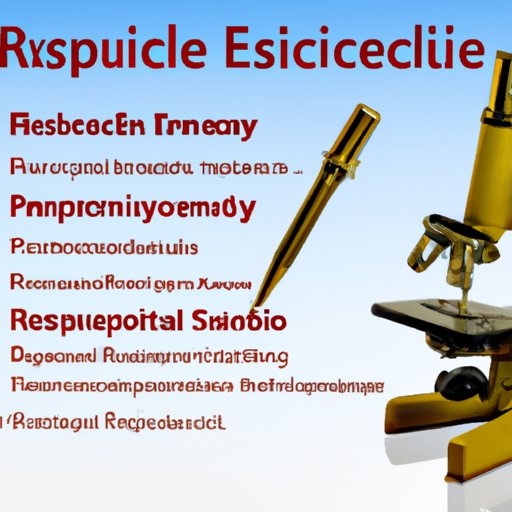Introduction
The term “pseudoscience” is used to describe claims or theories that are presented as scientific but lack supporting evidence or fail to follow the scientific method. Examples of pseudoscience include astrology, homeopathy, and certain conspiracy theories. But how can we distinguish between science and pseudoscience? In this article, we will explore the three qualities that separate science from pseudoscience.
Analyzing Evidence
One way to distinguish between science and pseudoscience is to compare the evidence used in scientific claims and pseudoscience claims. Scientific claims are supported by evidence from well-designed experiments, while pseudoscientific claims are often based on anecdotal evidence or personal beliefs. For example, a study on the effectiveness of a new medication would be based on data from clinical trials, while a claim about the healing power of crystals would rely on testimonials and subjective experience.
It is also important to examine the reliability of the evidence used in scientific claims. Scientific research relies on rigorous methods such as double-blind studies and randomized controlled trials to ensure accuracy and reduce bias. On the other hand, pseudoscience often relies on unreliable methods such as surveys or self-reported data, which can be easily manipulated.
Scientific Method
Another key difference between science and pseudoscience is the use of the scientific method. The scientific method is a systematic process of inquiry that involves making observations, forming hypotheses, designing experiments, collecting data, and drawing conclusions. Scientists use the scientific method to test their hypotheses and arrive at evidence-based conclusions.
In contrast, pseudoscientific ideas are not tested using the scientific method. Instead, they are based on subjective interpretations or personal beliefs. For example, a scientist might use the scientific method to test the hypothesis that a new drug is effective in treating a particular condition, while a pseudoscientist might simply make an unsubstantiated claim without any evidence.
Replicability
Another major difference between science and pseudoscience is the replicability of scientific experiments. Replicability means that experiments can be repeated with similar results. This is one of the foundations of the scientific method; if an experiment cannot be replicated, its results cannot be trusted. Scientists must be able to replicate their experiments in order for their results to be accepted as valid.
In contrast, pseudoscientific ideas are not subject to the same level of scrutiny. They are often based on subjective interpretations or personal beliefs, and they cannot be tested or replicated. For example, a scientist might use the scientific method to test the hypothesis that a new drug is effective in treating a particular condition, while a pseudoscientist might simply make an unsubstantiated claim without any evidence.
Testing
Testing is another key factor in distinguishing between science and pseudoscience. Scientific research typically involves controlled experiments that test specific hypotheses. These experiments are designed to eliminate bias and minimize errors. The results of these experiments are then analyzed and evaluated to draw evidence-based conclusions.
In contrast, pseudoscientific claims are not subjected to the same level of testing. They are often based on subjective interpretations or personal beliefs, and they cannot be tested or evaluated in the same way as scientific experiments. Furthermore, pseudoscientific claims are often presented as facts without any supporting evidence.
Peer Review
The peer review process is another way to distinguish between science and pseudoscience. Peer review is a process in which experts in a field evaluate a scientific paper or study to determine its accuracy and validity. Peer review is an essential part of the scientific process, as it ensures that research is held to the highest standards of quality and accuracy.
In contrast, pseudoscience is not subjected to the same level of scrutiny. Pseudoscientific claims are often made without any supporting evidence or scientific basis, and they are not subjected to the same rigorous peer review process as scientific research.
Refutability
The concept of refutability is another way to distinguish between science and pseudoscience. Refutability refers to the ability of a scientific theory or hypothesis to be disproved. Scientific theories must be open to the possibility of being disproved, as this allows them to be tested and refined over time. A good example of a refutable scientific theory is the theory of evolution, which has been tested and refined since it was first proposed.
In contrast, pseudoscientific beliefs are not open to the possibility of being disproved. They are based on subjective interpretations or personal beliefs, and they are not subjected to the same rigorous testing and evaluation as scientific theories. Furthermore, pseudoscientific beliefs are often presented as facts without any supporting evidence.
Conclusion
In conclusion, there are three key qualities that separate science from pseudoscience: analyzing evidence, the scientific method, replicability, testing, peer review, and refutability. Scientific claims are supported by evidence from well-designed experiments, while pseudoscientific claims are often based on anecdotal evidence or personal beliefs. The scientific method is a systematic process of inquiry that involves making observations, forming hypotheses, designing experiments, collecting data, and drawing conclusions. Scientific research typically involves controlled experiments that test specific hypotheses, while pseudoscientific claims are not subjected to the same level of testing. Finally, scientific theories must be open to the possibility of being disproved, while pseudoscientific beliefs are not open to the possibility of being disproved.
This article has explored the three qualities that separate science from pseudoscience. Further research is needed to understand the differences between science and pseudoscience in greater depth.
(Note: Is this article not meeting your expectations? Do you have knowledge or insights to share? Unlock new opportunities and expand your reach by joining our authors team. Click Registration to join us and share your expertise with our readers.)
